Text
A fish out of water
The hunt for the missing fish
Tiktaalik is a lobe-finned fish that lived during the late Devonian period (around 375 million years ago) and the first fossils were found in 2004 on Ellesmere Island in Nunavut, Canada. The discovery, made by Edward B. Daeschler of the Academy of Natural Sciences, Neil H. Shubin from the University of Chicago, and Harvard University Professor Farish A. Jenkins Jr, was published in the April 6, 2006, issue of Nature
The name Tiktaalik is an Inuktitut word meaning "large freshwater fish" this name was given by Inuit elders of Canada's Nunavut Territory, where the fossil was discovered.
When Tiktaalik was alive it would have lived on the continent of Laurentia, this was the continent of North America but also included Greenland and was centered on the equator and had a warm climate. The fossils were found in the deposits of meandering stream systems suggesting a benthic animal that lived on the bottom of shallow waters and perhaps even out of the water for short periods, with a skeleton indicating that it could support its body under the force of gravity whether in very shallow water or on land.

Credit to Pelvic girdle and fin of Tiktaalik roseae by Neil H. Shubin, Edward B. Daeschler, and Farish A. Jenkins Jr.
Tiktaalik the fish
Tiktaalik is a strange fish, strange in the sense that it had gills and scales like any other fish but it also strong interior bones in its fins. This allowed for both paddling and also allowed Tiktaalik to prop himself up in shallow water and even pull himself up on the land. The front arms of Tiktaalik could be more described as more like that of a crocodile, including a shoulder, elbow, and wrist.
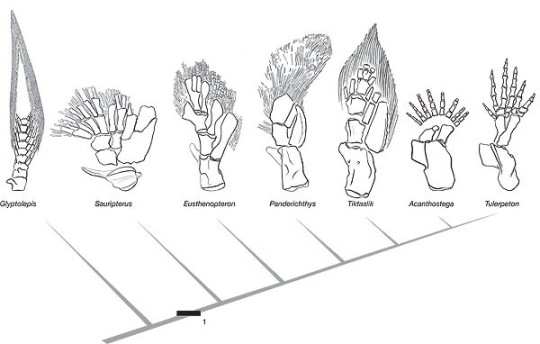
On the top of the skull there were opening that indicated Tiktaalik had primitive lungs as well as gills. This attribute would have been useful in shallow water, where higher water temperature would lower oxygen content. This development may have led to the evolution of a more robust ribcage, a key evolutionary trait of land-living creatures. The more robust ribcage of Tiktaalik would have helped support the animal's body any time it ventured outside a fully aquatic habitat.
At the time Tiktaalik was swimming about, the first trees had started growing on land and would have started to shed their leaves into the muddy water, attracting small prey into warm oxygen-poor shallows that were difficult for larger fish to swim in.
Why did Tiktaalik go onto land
The rivers in the Devonian were a competition for survival, there were many choices for body plans, you could be big to not be eaten or small to get away from predators, grow massive teeth bite other fish or grow thick scales to be hard to bite but Tiktaalik managed to get away from the large fish and eat the small fish by crawling on the mud flats.
First, it was a convenient way to escape the huge carnivorous fish that lived in the deeper waters. It also probably helped Tiktaalik, who was a predator as well, pursue some of the smaller fish hiding in the shallows and the bug-like critters inhabiting the dense foliage banking the rivers and streams.
- https://tiktaalik.uchicago.edu/meetTik3.html
Thank you for reading this far down i hope you enjoy, I will be doing weekly posts again, I would really appreciate if you could reblog this thank you <3
#fish#bone#jaw#hunt#nature#dinosaur#history#prehistory#essay#like#comment#reblog#science#biology#geology#paleontology#rock#fossil#tetrapoda#evolution
52 notes
·
View notes
Text
The strangest reconstruction of a dinosaur
Russian paleontologist Evgeny Maleev in 1954 thought that Therizinosaurus was a giant sea turtle based on the original fossils only being the 3 large claws. The claws were thought to have been used to harvest seaweed. Maleev only depicted a fragmented rib and the most complete claw and noted some inconsistencies regarding the affinities of this new taxon.
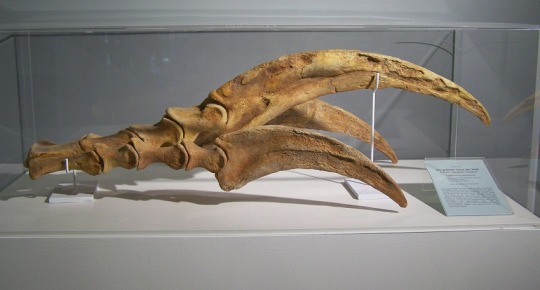
The holotype was named Therizinosaurus cheloniformis which translates to (scythe lizard) (turtle-like) after the original thought of how the dinosaur looked.
Though it was not fully understood what general kind of creature these claws belonged, in 1970, the Russian paleontologist Anatoly K. Rozhdestvensky was one of the first authors in suggest that Therizinosaurus was a theropod dinosaur and not a turtle.
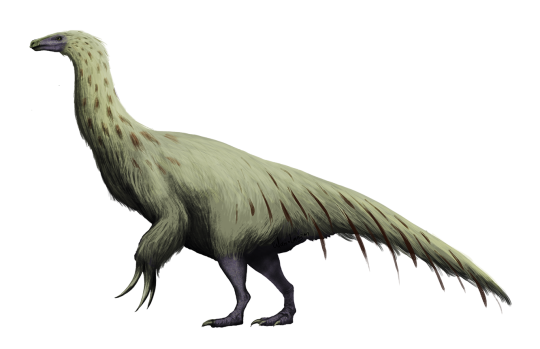
To all of my boomer follows you may remember back in the day when my favourite dinosaur was a turtle with a Archelon type beat
image credit to wikipedia
#dinosaur#history#prehistory#jurassicworld#jurassicpark#science#turtle#pet#furry#like#comment#reblog#follow#nature#tree#leaf#Claw#attack#violent
48 notes
·
View notes
Text
The snake that lived through the mass extinction
Palaeophis is a marine snake that is the type genus (The genus that defines the biological family) of the extinct snake family Palaeophiidae that lived from the Cretaceous period to the Eocene epoch (around 70.6 to 33.9 Million years ago) and was round In many countries such as England, France, Denmark, Morocco, Mali aswell as many parts of the United States. This means that Palaeophis saw the final days of the dinosaurs and potentially was prey and/or hunted Dinosaurs.
These species varied broadly in size; Palaeophis casei is the smallest at 1.3 metres of length, while Palaeophis colossaeus, known from isolated vertebrae, is the largest at the estimated size limits for the genus at over 9 m (29.5 ft) in length, making it one of the largest known snakes. However most species of the genus were not as big.
The first specimen of Pterosphenus Lucas was found in Alachua County, Florida and the fossils of this specimen shed lots of light on the specializations of this giant marine snake being fully aquatic, the marrow cavities are greatly enlarged with thinning of the vertebrae walls much more so than other species of Pterosphenus.
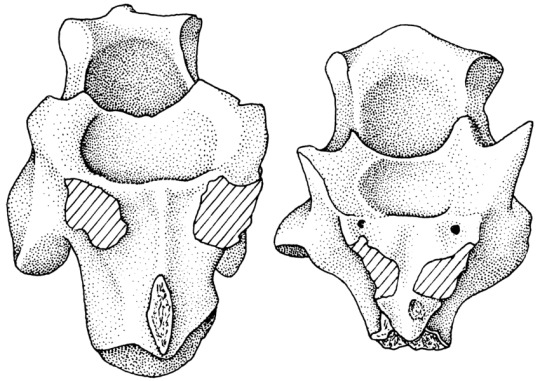
#snake#dinosaur#prehistory#history#biology#paleontology#scale#swim#aquatic#bone#fossil#preolithic#predator#prey#like#follow#reblog
12 notes
·
View notes
Text
The curious crocodile
like everything during the Mid-Cretaceous a time when everything that started evolving into crazy versions of their ancestors, Laganosuchus ( La-gan-oh-soo-kuss) known as the pancake crocodile hit the stage of Niger, Africa. Same as most prehistoric crocodiles Mr pancake here grew to a crazy size of 20ft from snout to tail and would have been a meat-eater.

Mid-Cretaceous Niger would have been a wild time to live in as there are many unpleasant dangerous creatures and some curious-looking dinosaurs, Laganosuchus would have lived alongside Kaprosuchus (Kap-roe-soo-kuss) and the hole punch faced sauropod called Nigersaurus (Nee-jer-sore-us).
Laganosuchus had a very wide but thin mouth leading to an extremely shallow head overall, this shows that Laganosuchus had a very specialized hunting method for catching fish. It would do literally nothing and wait for fish to swim in its mouth and then it would swallow them whole, it had very thin and fragile jawbones which is the opposite to any crocodile that lives today, this is further proof that it wouldn't have taken on large prey and instead waited for something to come and swim in its path.
#dinosaur#crocodile#teeth#scale#tail#tooth#giant#long#like#comment#follow#history#prehistory#paleontology#biology#geology#claw#hunt#fish#vore#gore
25 notes
·
View notes
Text
The Island dwelling dragon
Hatzegopteryx (Hat-zeh-gop-teh-rix) is a Pterosaur that has lead to a lot of questions from Paleontologists. What is Hatzegopteryx? How did something so big survive on an island?
When it got discovered in 1991 paleontologists thought it was a theropod (A group of dinosaurs that include the famous T. Rex) this was an easy mistake to make as there are many more large theropods than there are large Pterosaurs. Turns out it wasn't a Dinosaur let alone Theropod it was a Pterosaur that many people confuse for dinosaurs.
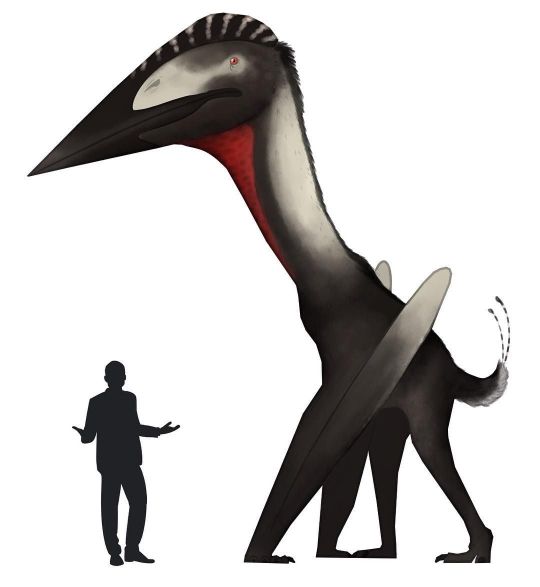
A giant pterosaur seems like it wouldn't be able to survive on an island but it managed to thrive, this brought up for it would eat, the original thought was that it was a scavager that would just prey on already dead animals but this wouldn't be able to sustain these animals so then the next thought was it fed like a Pelican by skimming the water, this has already been seen in a different pterosaur called Pterodaustro (Teh-roe-daws-trow) but again this seems so unlikely for such a massive creature. The most likely theory is that it would hunt while walking like a modern-day hornbill this method would be called “terrestrial stalker.”
#pterosaur#dinosaur#wings#beak#eye#fly#claw#carnivore#paleontology#biology#geology#bird#history#prehistory#fact#comment#like#reblog
150 notes
·
View notes
Text
The great T Rex debate
Undoubtedly the most well-known dinosaur is the Tyrannosaurus (Even though it shouldn’t be but that's another post) and having this title leads to having many unanswered questions.
The eating habits of the Tyrannosaurus (Ty-ran-no-sore-us) have been questioned a lot, the three main theories are that it was a scavenger that only scared off the true predators and unrightfully stole the rewards or it could have been an active predator that would have eaten anything it could get its jaws on or the most common theory is that it would have done both.
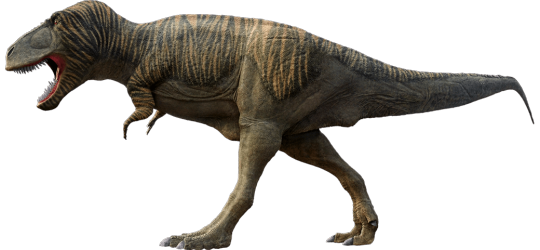
Back in 2013 a hadrosaur fossil was dug up with a Tyrannosaurus tooth stuck in one of the vertebrae but Scans of the tooth and two surrounding tail vertebrae showed clear signs of bone healing around the wound, taken as proof that the hadrosaur was alive at the time of the attack and survived for several months or even years afterward.
This proves that Tyrannosaurus was active predator but there is also some scary evidence that Tyrannosaurus was a cannibal, there are 13 sets of Tyrannosaurus skeletons that had bite marks on the arms and legs, the bit marks line up exactly with a Tyrannosaurus jaw. If the tyrannosaurus was alive when it got the bite marks why would the opposing Tyrannosaurus bit its legs and arms instead of the efficient biting the neck.
#tyrannosaurus#trex#jurassic park#jurassicpark#jurassic world#history#prehistory#fact#like#comment#follow#paleontology#geology#biology#jaw#bite#skeleton#gore#dinosaur#reptile#teeth#hunter#attack#cannibalism
66 notes
·
View notes
Text
the fall of the giant
It’s a puzzle piece that has eluded shark scientists for years: just why exactly did the ancient Otodus megalodon, the largest shark to ever swim in our planet’s oceans, disappear? While recent movies and mockumentaries have toyed with the idea that “the Meg” is still alive, it is unquestionably extinct according to marine biologists. Theories have been proposed ranging from lack of prey to mass extinction events. Extinct or not (as some conspiracists believe), the nearly 60-foot-long creature captures everyone’s attention.
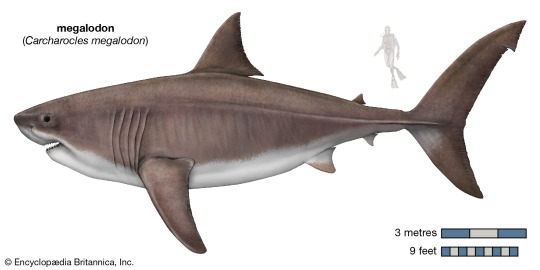
What started out in a sandy beach in California for Boessenecker and a curiosity has led to an answer that took the internet by storm: megalodon vanished some 3.6 million years ago, which is a million years earlier than any other previous estimates. Published in the journal PeerJ, this timeline means as the megalodon fell… the animal we know today as the modern great white shark (Carcharodon carcharias) rose.
As the megalodon population became fragmented, the large predators had to fight for dwindling food not only against one another but the newly emerged and much smaller great white shark. Although smaller, great whites are just as fierce as any other shark and their reduced size and possible increased agility may have given them the upper hand. Both animals ate similar prey, meaning the megalodon stood no chance against the newest competitor.
209 notes
·
View notes
Text
The Dinosaur that dug
When you think of dinosaurs the most common thought to have is the ferocious giants that were killing machines that would spend every day fighting but recently a new style of dinosaur life has been found in the form of Orodromines who dug burrows and took care of their young.
Several kinds of small-bodied mammals like rabbits, prairie dogs, and meerkats live in burrows with family members today, but so far orodromines are the only known dinosaurs with a similar lifestyle. Like their mammalian counterparts, orodromines appear to have been social animals living with family members in burrows to guard against the elements and protect against predators.

Orodromeus is similar to the small running dinosaurs known informally as “hypsilophodonts,” but it had a number of strange features that showed its arms and shoulders were extremely muscular, and the hips extra sturdy.
Skeletons of adults and juveniles of Oryctodromeus were first discovered in a sand-filled tunnel that cut through mudstone layers of the Blackleaf Formation in Montana. The tunnels are roughly two meters (6.5 feet) long and have two 90° bends to the left and right near the middle. The animals dug the burrows into soft sediments over 95 million years ago.
35 notes
·
View notes
Text
An odd-ball of a Reptile
Today there are only a few animals that have a prehensile tail that allows them to use it like its an extra limb to climb and prevent falling, all the animals that have this today are mammals but going back 212-million-years a tree-dwelling reptile roamed the forests of Italy.
There are two main features that set Drepanosaurus apart from just a generic reptile, the first is that it had a large claw on the end of its second digit, this claw was the same size as the whole rest of the hand this would have been used to rip up the bark on trees and claw in the crevices so it could pull out small grubs to eat.

“The entire arm could then have been powerfully retracted to tear open the nest. This motion is very similar to the hook-and-pull digging of living anteaters, which also eat insects.” Dr. Pritchard said.
The second feature that makes this fascinating reptile stand out is the tail that it would have used to wrap around objects to grant it additional grip, this tail and the build of its hands and feet show that it wouldn't have walked along the ground but rather climbed from tree branch to tree branch.
#Dinosaur#history#prehistory#fact#science#paleontology#biology#geology#like#comment#reblog#follow#reptile#legs#tail#claw#jaw
20 notes
·
View notes
Text
The true devil duck of doom
When you think of Raptors you will either think of the giant 6ft hunters that tried to kill two kids in a futuristic theme park or you’ll think of the living raptors that roam the sky today but if you look deeper into the raptors evolutionary tree you’ll find a few oddballs.
Today's Dinosaur called Halszkaraptor was a tiny little raptor but had a lot of traits and looked very much like a modern-day duck. Unlike a cute duck from today you wouldn't want to feed this little guy any bread because he was an active predator.
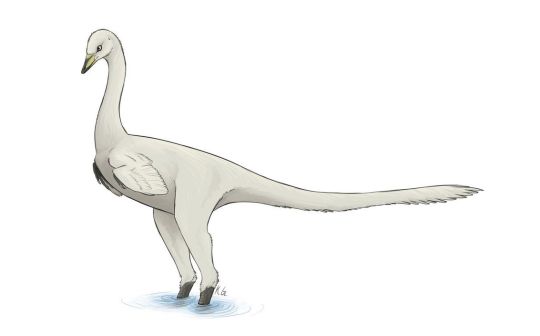
Like many semi-aquatic birds today Halszkaraptor would have had an advanced sense of touch so it would have been able to catch small fish in the murky water that it swam in, it also used small but sharp teeth to grab these fish once it found them.
Halszkaraptor lived between 75 to 71 million years ago this means that this cute little raptor was the size of the modern-day Mallard duck but it had a few features the same as its giant-sized cousin, unlike the webbed feet todays ducks Halszkaraptor had claws the Halszkaraptor likely stood very upright about 45 centimeters tall and walked on two feet.
#bird#swan#duck#raptor#jurassicpark#jurassicworld#dinosaur#history#prehistory#fact#science#biology#paleontology#geology#like#comment#follow#reblog
29 notes
·
View notes
Text
When rats were as big as dogs
Multiple species of rat have been found by Paleontologists and Archeologists, hunting prehistoric rodents wasn’t the intent of the crew, they were trying to find out the dispersal of early humans throughout southeast Asia.
The humans lived in the area 46,000 years ago and co-existed with the rats for thousands of years, using them for food which is proven by the fact that the bones had cut and burn marks on them.

The mega-rats could grow to the size of a small dog and as big as 11lbs each, for context a modern-day rat averages at around 200g each.
The rats seemed to go suddenly extinct around a thousand years ago for unknown reasons but it is thought that when humans gain the ability to make metal tools they could clear land faster than ever before and this meant that the rats would be killed off before they could breed leading to extinction.
#mammal#rat#cute#scary#creepy#dinosaur#fauna#history#prehistory#biology#geology#paleontology#feet#fur#tail#like#comment#reblog#follow
8 notes
·
View notes
Text
Beauty and the mid-Triassic zipper faced beast
Nothing says movie star marine mammal like a zipper face but that's exactly what Atopodentatus had, looking like a b-movie version of the top of the predator's mouth it had teeth spanning both sides of the top of its lips.
Unlike the badass 90 horror movie monster, Atopodentatus didn’t like to hunt the fish of its time as it had more of a taste for small invertebrates in the mud at the bottom of its vast watery habitats.
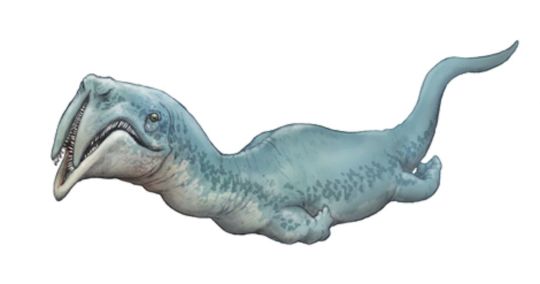
Although it looks like it would be able to crunch anything it got its mouth on but both its teeth and jaw would have been way too weak for it to do anything other than hone its inner baleen whale and be a 10-foot-long filter feeder.
The fossil hails from Luoping, China, where a massive haul of specimens has shown that this bizarre marine reptile from 245 million years ago was in good company. Ichthyosaurs, long-necked Dinocephalosaurus, sea urchins and isopods have been unearthed in the same area. Atopodentatus unicus can take comfort at least in being the weirdo king of this Triassic menagerie.
#weird#dinosaur#triassic#like#comment#follow#reblog#new#post#face#predator#history#prehistory#legs#swim#biology#geology#paleontology
23 notes
·
View notes
Text
Allosaurus’ unique killing blow
Researchers used an approach usually applied to analyzing stresses in buildings called Finite Element Analysis (FEA) to analyse the skull of an allosaurus and proved that it was only about a quarter as effective as the famous tyrannosaurus rex,
Instead of relying on a vice-like bite, Allosaurus used powerful neck muscles to drive its skull downward into prey, slashing off strips of flesh. This bite is more similar to a modern-day Komodo Dragon while Tyrannosaurus was more like a hyena
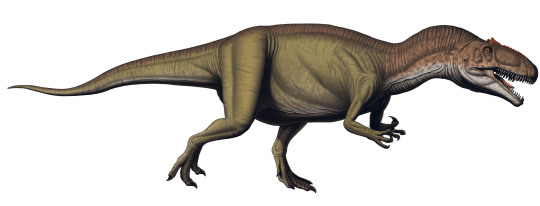
Allosaurus recently came to fame as 'Big Al', the star of a BBC documentary on the life of a single dinosaur. Alive during the late Jurassic Period 140 million years ago, Allosaurus could grow to 12 meters long and weigh up to five tonnes.
This is the first time that FEA has been applied to the bones of extinct animals to unravel how they behaved in life, and there are plans to take on some other dinosaur mysteries.
"We could examine whether pachycephalosaur (thick-headed dinosaur) skulls really were strong enough to permit head-butting behavior, we can look at the strength of say Triceratops horns or Stegosaurus plates," Dr Rayfield said.
#allosaurus#teeth#bite#claw#leg#dinosaur#prehistory#history#biology#geology#paleontology#like#comment#reblog#follow
19 notes
·
View notes
Text
Preolithic’s favorite prehistoric creatures part 2
Favorite Synapsid
Cotylorhynchus was a very curious looking synapsid, it had a barrel-shaped body accompanied by a tiny head and a long tail. The chunky body was used in two different ways one was for defense and the other more interesting way was for large digestive organs that were required for getting the maximum amounts of nutrients from the plants that it ate. Cotylorhynchus was giant and grew to 6 meters long and was one of the largest synapsids of its time.
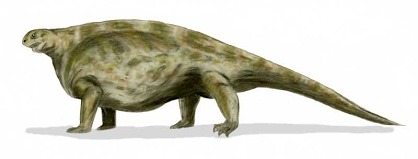
Favorite Ceratopsian
Pentaceratops was a Ceratopsian whose name means ‘five horned face’ even though it didn't have five horns, it had 3 horns and the other two ‘horns’ were actually just elongated cheekbones. It is known for having an extremely large neck frill, Pentaceratops actually has one of the largest neck frills of all Ceratopsians.
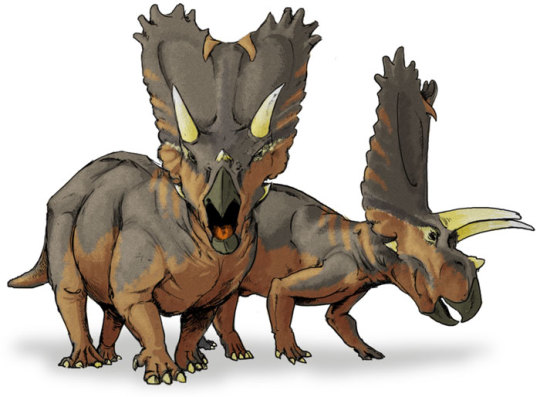
Favorite Pterosaur
Pterodaustro was a rather ugly looking pterosaur but it had a very strange feature, not only was it the first pterosaur to be discovered in South America it was also found to not have had normal teeth or a toothless beak it had several hundred bristle-like teeth used for filter-feeding the same way that some whales have today this would make sense if it wasn't on a pterosaur that would spend most of its time flying
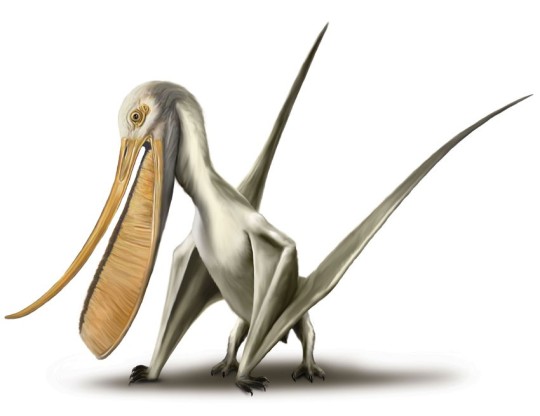
#dinosaur#paleontology#fact#history#prehistory#wings#legs#teeth#filter#fur#synapsid#pterosaur#like#comment#reblog#follow
54 notes
·
View notes
Text
Preolithic’s favorite prehistoric creatures part 1
Favorite Theropod
Therizinosaurus is my favorite theropod mainly because of how different it is compared to any other theropod that lived around its time. By the look of this scary devil chicken, you would think it would have been the apex carnivore of the time but this giant would have been a peaceful herbivore using its 3m long claws. Although we have only found the arms of it but comparing the size to other Therizinosauridae Therizinosaurus it would have been massive up to 6m tall.
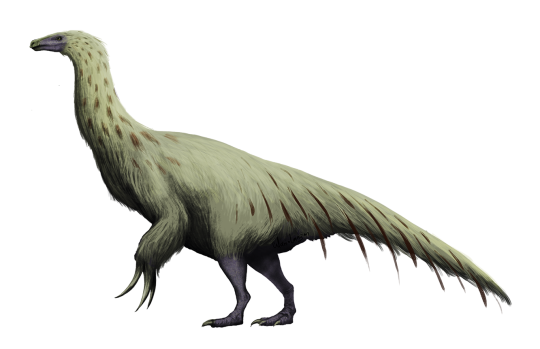
Favorite Crocodile
Armadillosuchus was a small crocodile that lived during the cretaceous period in brazil, what is fascinating about this little croc was that is had armadillo-like plating which gives it it’s name. Unlike most crocodiles, it had a lot of mammal-like features in the jaw and teeth but was unrelated. Armadillosuchus in life would have been up to 6.6ft long.
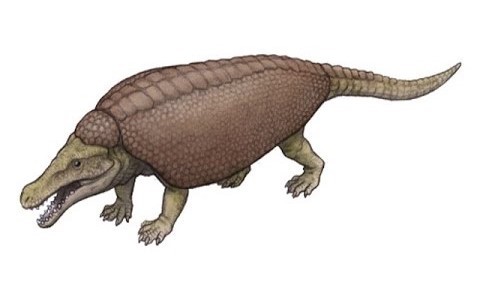
Favorite Sauropod
Shunosaurus was a very distinct looking sauropod and had a very unique feature, unlike other sauropods that used their size as a defense or used spikes around there neck to stop them getting bitten Shunosaurus had a spiked tail allowing it to attack predators. This is very rarely seen on sauropods and makes me think of them when people say “think of a sauropod”

#legs#scale#crocodile#dinosaur#history#prehistory#preolithic#science#paleontology#biology#geology#neck#teeth#eye#feather#claw#theropod#sauropod#muscle#walk#run#burrow
19 notes
·
View notes
Text
Amargasaurus, Amarga lizard
while not as well known as other famous sauropods such as Brachiosaurus and Apatosaurus, Amargasaurus was a very distinct looking sauropod and very interesting for anyone who even has a slight liking for dinosaurs.
The most fascinating feature of Amargasaurus is the two rows of spikes running along the back of the dinosaur but the spines of Amargasaurus would have been largest at the neck, there are two theories about how this would have looked on a living specimen. Either the rows of spikes had a layer of skin connecting them making them a sail or they would have been two rows of just keratinous horns.

The reason why Amargasaurs had these neck spikes is also up for debate predator defense is a possibility but it seems unlikely as if this were the case you would expect the spines to have been enlarged and equally sized over at least the whole back of the body as well. If a sail was carried by the spines then thermoregulation is something to consider, however this is also unlikely as no other sauropod is known to have needed such a temperature regulation device. Also two sails close together would have shielded one another from the wind making them at best half as efficient as a single sail.
Amargasaurus would have been 10 meters long in life and 5 meters of this would have been its tail, this seems large but for a sauropod but this would have been quite small. The more popular sauropods that were mentioned earlier would have dwarfed Amargasaurus.
The overall body shape of Amargasaurus has seen it classed as a diplodocid sauropod (same group as Diplodocus), and Amargasaurus is thought to have been most closely related Dicraeosaurus from Tanzania which also had spines along its back.
#legs#spines#neck#sauropod#tumblr#fact#science#paleontology#prehistoric#prehistory#history#real#scary#nature#herbivore#like#comment#reblog#like4like#reblog4reblog#follow#scale#dinosaur#dino#jurrasic world#jurassic world#jurassic park
9 notes
·
View notes